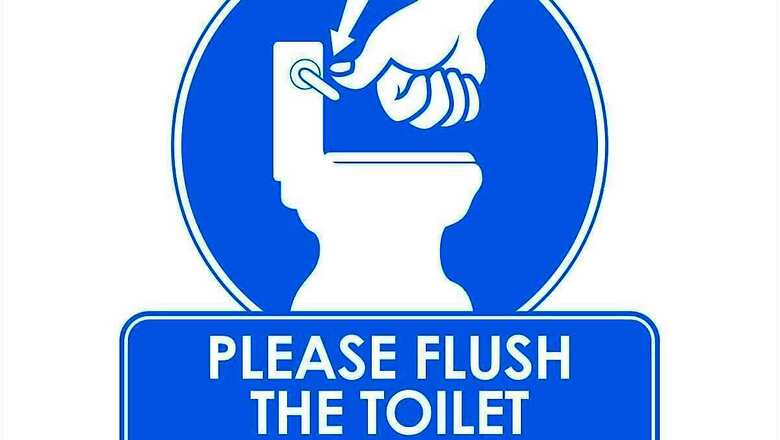
views
Toilet sanitation is a fundamental human right, yet millions of people around the world still lack access to safe and hygienic toilets. Inclusive toilet sanitation is the provision of toilets that are accessible, affordable, acceptable, and appropriate for all people, regardless of their age, gender, disability, health status, or socio-economic background. It aims to thwart discrimination, and create dignity and safety for all.
Advocating for inclusive toilets is essential to ensure the human rights, health, and well-being of all people, especially those who are marginalised and vulnerable. Advocating for inclusive toilets also contributes to the achievement of the Sustainable Development Goals (SDGs), particularly SDG 6 on clean water and toilets, which calls for universal and equitable access to adequate and affordable toilets and hygiene for all by 2030.
The monsoon season creates major setbacks when it comes to toilets. Each year, toilets are flooded or waterlogged by flooding and cloudbursts, swept away or badly damaged by landslides. This puts local populations at risk – exposing them to unsafe, unsanitary and undignified conditions.
Monsoon-proof toilets are designed to withstand heavy rainfall and flooding. These are meant to prevent contamination of water sources, prevent spread of diseases, and withstand damage normally caused by the monsoon. They are meant to ensure that local populations don’t have to ‘make do’, not even during the worst of the monsoon.
The Need for Inclusive Monsoon Proof Toilets
Vulnerability during Monsoons
The lack of adequate toilet facilities becomes even more acute during the monsoon season, when many communities face flooding, landslides, waterlogging, and erosion that affect their access to toilets. As these monsoon related incidents are only set to increase due to the effects of climate change, monsoon-proof toilets haven’t just become the need of the hour, but also for the foreseeable future.
Health and Environmental Hazards
The inadequate access to toilets during the monsoon exposes marginalised communities to various health and environmental hazards. It also poses larger risks to public health. For example, the contamination of water sources by human excreta can lead to the outbreak of waterborne diseases, such as diarrhoea, cholera, typhoid, and hepatitis A.
Reducing wastage of public expenditure
With each degree of global warming, the monsoon gets 5% stronger. This means we can expect more flooding, more incidents of cloud bursts and flash floods (when enormous quantities of rain occur in a very short time), landslides and other rain related calamities. Each time a city block floods, so do the public toilets. In addition to property damage, this creates public health crises – outbreaks of preventable diarrhoeal disease, increased incidence of vector borne diseases while broken and damaged toilets allow mosquitos to flourish.
All of these expenses (repair, clean up, public health) can be reduced by building monsoon-proof toilets in the first place.
Impact on Social and Economic Development
Effect on Public Health
The burden of disease caused by poor toilet sanitation can reduce the productivity and income of workers, increase the absenteeism and dropout rates of students, and increase the expenditure on health care and treatment. According to the World Bank, poor toilet sanitation costs the global economy $260 billion per year in lost productivity.
Impact on Education and Employment
The inadequate access to toilets during the monsoon also affects the education and employment opportunities of marginalised communities, especially women and girls. Many women and girls face difficulties in managing their menstrual hygiene during the monsoon due to the lack of privacy, safety, and sanitary materials in their toilets, causing them to drop out altogether.
Social Stigma and Discrimination
The inadequate access to toilets during the monsoon also exposes marginalised communities to social stigma and discrimination based on their sex, caste, ethnicity, religion, or disability status. These problems become even more pronounced during times of flooding, when these individuals have to venture outside their trusted communities, and go to ‘other’ public toilets where the chances of them being harassed are much higher.
Key Tenets of Inclusive Monsoon-Proof Toilet Sanitation
In order to ensure that toilet sanitation is accessible to, and inclusive of, every single one of us, there are certain tenets that must be observed:
Location and Proximity to Communities
Facilities should be within a reasonable walking distance from the users’ homes, schools, workplaces, or public places. This can reduce the time and effort required to access toilet sanitation, as well as the risks of violence, harassment, or accidents that may occur along the way.
Barrier-Free Design for People with Disabilities
This means that the facilities should be designed and constructed to accommodate the diverse needs and preferences of people with different types of disabilities, such as physical, sensory, intellectual, or mental impairments. For example, the facilities should have ramps, handrails, grab bars, seats, handles, locks, signs, and lighting that are suitable for people with mobility,
vision, hearing, or cognitive impairments.
Gender-Inclusive Facilities
Another key element of inclusive toilet sanitation is to ensure that the facilities of toilets are gender-inclusive and responsive to the needs and preferences of the entire gender spectrum. This means gender inclusive toilets that have separate or shared facilities for men, women, transgender, or non-binary people depending on their choice and comfort.
Going Beyond the Obvious with Education and Awareness
Before the Swachh Bharat Mission, the topic of toilets was considered ‘impolite’. We didn’t talk about toilets, we didn’t learn how to clean our own toilets, and we never considered the plight of the millions of toilet sanitation workers who work in some of the most hazardous conditions and yet earn the lowest wages.
Thankfully, the Swachh Bharat Mission began the work of shifting this mindset. Harpic, India’s leading brand in the lavatory care segment has also been plugging away at bridging the awareness gap through thought provoking campaigns over the years. It has also joined hands with News18 to create Mission Swachhta aur Paani, a movement that champions the cause of inclusive toilet sanitation where everyone has access to clean toilets. It advocates equality for all genders, abilities, castes and classes and strongly believes that clean toilets are a shared responsibility.
Mission Swachhta aur Paani also serves as a valuable repository of information related to any and all topics related to the provision of clean, safe and inclusive toilets. The purpose of this repository is to empower us to take actions that are within our power – be it educating our own children and those of our maids, lobbying local municipalities for monsoon proof toilets, or amplifying our messages on social media.
What we talk about matters. Join us here, to learn how you can do your part in this national transformation.
















Comments
0 comment